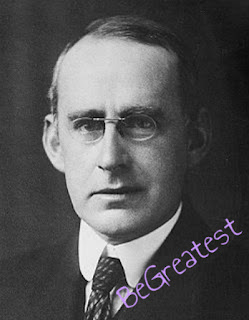Thursday, April 5, 2012
Sir Arthur Eddington
It's a Fact
There is a story which states that when a journalist asked if it is true that only three people understood relativity in the world, Arthur Eddington replied, "Oh, Who's the 3rd?"(implying that the other two are Einstein and himself).
Sir Arthur Stanley Eddington.
`````(1882-1944)
~~~~~~~~~~~~The astronomer who "expanded" the Universe
Born : December 28, 1882 Kendal., England
Died : November 22, 1944 (aged 61) Cambridge, England
Residence : UK
Nationality : British Field : Astrophysicist
Institutions : University of Cambridge
Alma mater : University of Cambridge
Academic advisor : Horace Lamb
Notable students : Leslie Comrie
Known for: Eddington limit, Eddington number, Eddington-Dirac number
Notable prizes: Royal Society Royal Medal (1928)
Religion : Quaker
Sir Arthur Stanley Eddington was an English astronomer and physicist of the early twentieth century. He made groundbreaking research in astronomy, especially theoretical investigations into the interior of stars. Eddington was knighted in 1930 and received the Order of Merit in 1938.
When Germany went to war with Britain in 1914 the First World War started and this was caused by the assassination of Archduke Ferdinand by a Serbian anarchist. This war ended in 1919 and Germany was defeated by allies. In 1919 there was an English astronomer who vindicated a theory by a German physicist. The theory was General Relativity and the English scientist who proved this was none other than Sir Arthur Eddington. This was taken by the media as a reconciliation between the two countries after The Great War.
Eddington was awarded a natural science scholarship of 75 pounds a year to study at Trinity College, Cambridge University, which he entered in 1903. He graduated with Masters in 1905. Before the end of 1905, Eddington made the move to astronomy from mathematics with his appointment to a post at the Royal Observatory at Greenwich. Being appointed to fill a vacancy at the Royal Observatory he was immediately involved with a research project which had been underway since 1900 when photographic plates of Eros had been taken over the period of a year.
Eddington's first task was to complete the reduction of these photographic observations to determine an accurate value for the solar parallax. He developed a new statistical method based on the apparent drift of 2 background stars that won him a Smith's prize in 1907 and a Trinity College Fellowship. In 1913 Eddington was appointed to fill the vacant position of Plumian Professor of Astronomy at Cambridge University.
Originally the Plumian chair covered t e observational side of the astronomical research while the Lowndean chair s the other astronomy course which covered the theoretical side of Astronomy When the holder of the Lowndean chair, Robert Ball, died in 1913, Eddingto t ok over his post as well and was named the director of the entire Cambri ge ,bservatory the next year. He was elected a Fellow of the Royal Society slortlyafterwards. During World War I, Eddington refused military service, because of his pacifist views and Quaker tradition ideas. During this period of 1914-1918 he became interested in General Theory of Relativity. Eddington in 1919 wrote an article report on the relativity theory of gravitation, which introduced Einstein's general theory of relativity to the English speaking world.
After the war in 1919, Eddington travelled to the island of Principe near West Africa to watch the solar eclipse of May 29, 1919. During the eclipse he took pictures of the stars in the region around the sun. According to the theory of general relativity stars near the sun will appear to have been slightly shifted because their light will be curved by its gravitational field. This effect is only noticeable during an incident like an eclipse because sun's brightness obscures the nearby stars. Eddington's observations verified Einstein's theory, although on Eddington's part there were inaccuracies in some of the plates he developed. Nevertheless this verification was considered as proof of the validity of Einstein's theory and became a media sensation.Throughout his career Eddington lectured on relativity as well,and wrote the book "Mathematical Theory of relativity" in 1923, which Albert Einstein suggested was the finest presentation of the subject in any language.
Eddington strongly opposed the young Indian Physicist Subrahmanyan Chandrasekhar about his theory on the maximum mass of stars known as white dwarfs, the mass above which the star collapses and becomes a neutron star, Quark star or a black hole. Chandrasekhar was later proven to be right and later shared the Nobel Prize in Physics in 1983 with William Fowler.
In later years Eddington became fascinated by the idea that intelligent creatures like man could mentally derive the appearance of the universe without actually observing more than a few fundamental relations of physics. It is thus possible that a single complex theory, using the measured values of various physical constant would allow prediction of everything that can be measured about the universe. Eddington came up with this theory which had not been widely accepted by the other physicists.






 10:20 PM
10:20 PM
 Unknown
Unknown


 Posted in:
Posted in: 




0 comments:
Post a Comment